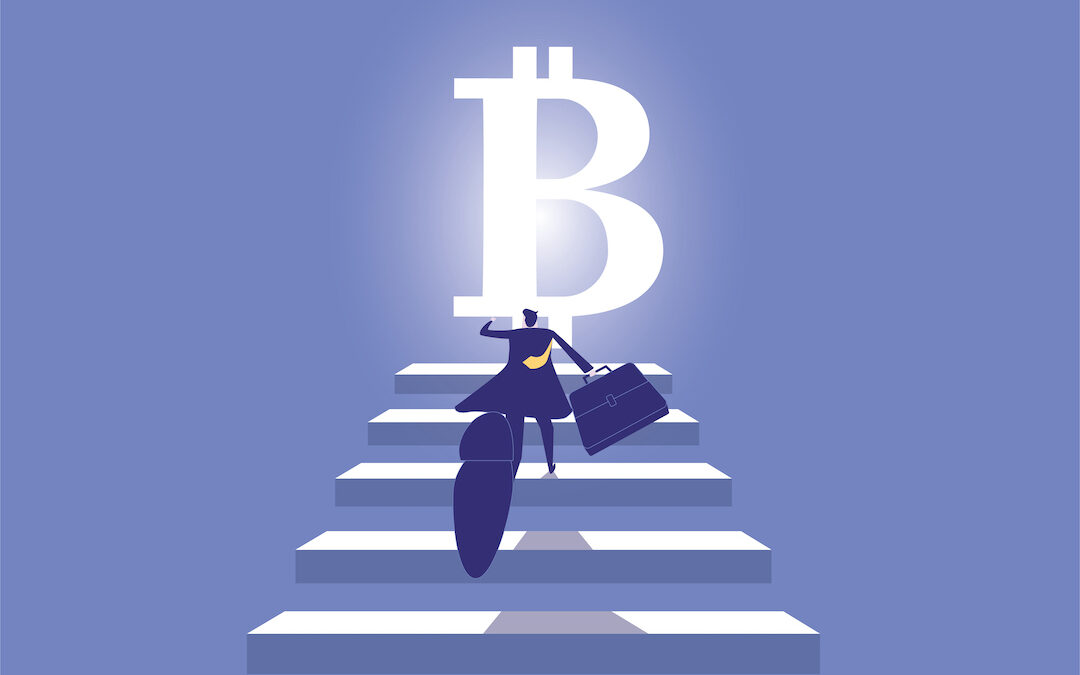Experts from Saxo discuss factors behind the recent surge in gold and Bitcoin.
At the beginning of the year, Saxo spoke with AusBiz. about 2024 becoming the year of the metals. So far, we’re seeing one metal in particular on the move, and it’s defying the odds a little.
Gold has reached record closing highs, trading well above USD 2000 an ounce despite rising bond yields and an appreciating USD – two financial drivers that don’t typically have a positive impact on the gold price. So, something else is going on.
Saxo believes that “something else” is retail investor demand for gold remaining strong, especially in Asia, as well as continued central bank gold buying in record quantities (in part to reduce exposure to the USD). The rally has also been driven by under-invested hedge funds forced back into the market as key resistance levels were broken, and a reduction in the short-selling appetite for gold due to global geopolitical tensions.
In the short term, gold may have to consolidate somewhat. However, with the prospect of US rate cuts later this year and a subsequent decline in US bond yields, fresh support for the gold price may yet arrive. We still see the prospect of gold breaking new record highs this year – up to and beyond USD 2300.

Charu Chanana from Saxo. Image: supplied.
Bitcoin fever runs hot, again
From gold to “digital gold”, Bitcoin has also surged to record peaks in 2024, fuelled by rising demand since the introduction of spot ETFs and anticipation surrounding the April ‘halving’ event. Moreover, a boost in liquidity and the prospect of US rate cuts in 2024 are propelling risk assets higher – notwithstanding Bitcoin’s already stretched positioning and significant volatility.
The price of Bitcoin soared to all-time highs of more than USD 72,000 in mid-March (well over AUD 100,000). Gains have reached more than 60 per cent year-to-date, with much of the surge occurring in recent weeks as trading volumes surged for US-listed Bitcoin funds. So, what is driving the Bitcoin rally? Saxo sees six key factors:
- Record inflows into Bitcoin ETFs: The first spotBitcoin ETFs were launched in January this year, and investors – including everyday investors, without crypto wallets – are rushing to pile money into these funds. BlackRock’s iShares Bitcoin Trust eclipsed USD 10 billion in assets this month.
- Anticipation ahead of the ‘halving’ event: The halving is a scheduled event in Bitcoin’s protocol that occurs roughly every four years. During this event, the reward that Bitcoin miners receive for validating transactions and securing the network is halved – decreasing the rate at which new Bitcoins are created and thus reducing available supply.
- Flush liquidity and a ‘risk-on’ environment: The US Fed’s overnight reverse repurchase agreement facility (RRP) – where eligible counterparties can park cash to earn a fixed rate – is dwindling. This means money market funds that parked excess cash with the RRP have been withdrawing it, particularly to buy T-bills. So, even as policy rates threaten to remain “higher for longer”, the market is flush with liquidity, in part fuelling the recent all-time highs across numerous risk assets, including NASDAQ equities.
- ‘FOMO’ buying: Few things induce more “FOMO” (fear of missing out) than witnessing Bitcoin’s ascent from the sidelines. Knowing others are making money can push people to take big risks, in the hope of doing the same.
- The ‘fragmentation game’: Bitcoin provides an alternative asset choice for those looking to diversify away from assets controlled by governments. This has long been a factor supporting gold and Bitcoin could face a similar demand if it is increasingly accepted as the “digital gold” of the 21st century.
- The end of the ‘crypto winter’: The market seems to be healing from the aftermath of the so-called “crypto winter”, marked by the collapse of firms like TerraLuna, Genesis, BlockFi and FTX, which tarnished cryptocurrency’s reputation.

Ole S. Hansen from Saxo. Image: supplied.
Of course, it is important to note that Bitcoin price action comes in high-beta cycle. When it rises, it rises fast, but when it falls, it also falls a lot faster than other risk assets. The recent run higher could have been a result of short-squeezing, as strong ETF flows leads to higher prices and forces some Bitcoin shorts to cover. Conversely, leveraged traders are forced to liquidate when Bitcoin prices decline, and this exacerbates the selloff. Volatility is thus a key risk to consider.
Crypto ultimately remains a speculative space with a lack of fundamental drivers and mainstream adoption. Investors should carefully consider crypto hedging via futures, options, or diversification into other, more defensive asset classes.
Charu Chanana is Saxo Head of FX Strategy, and Ole S. Hansen is Saxo Head of Commodities Strategy. Charu is based in Singapore, and Ole is based in Copenhagen.
*Disclaimer: Saxo Capital Markets (Australia) Limited (Saxo) provides this information as general information only, without taking into account the circumstances, needs or objectives of any of its clients. Clients should consider the appropriateness of any recommendation or forecast or other information for their individual situation.
For the latest news in business and finance, check out our Finance section.

